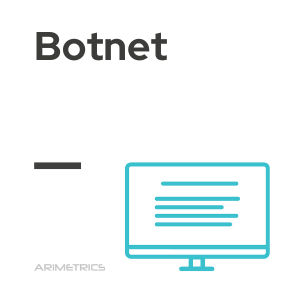Definition:
Botnet is a set of bots that operate autonomously and automatically. The creator of this network can control all computers and/or servers that have been infected.
That is, botnet refers to a group of computers that have been affected by malware. Equipment that has been damaged is referred to as robots, and can run automatically. It is, thus, one of the main threats to global cybersecurity.
What are botnets used for?
Botnets can be employed for a variety of illicit purposes, including:
- Massive sending of spam emails: Botnets are commonly used to send large volumes of unwanted emails, with the aim of distributing advertising, scams or additional malware.
- Denial-of-service (DDoS) attacks: By coordinating multiple devices to flood a server or website with traffic, botnets can make an online service inaccessible to legitimate users.
- Cryptocurrency theft: Some botnets are designed to steal cryptocurrencies, such as bitcoins, by leveraging the computing resources of infected devices to perform unauthorized mining.
- Mass advertising: Botnets can generate revenue for their controllers by displaying unwanted advertisements on infected devices, known as ad fraud.
How do I know if my computer is part of a botnet?
There are several signs that may suggest that a computer has been compromised and is part of a botnet:
- Slow performance: Internet access, as well as the execution of applications and programs, becomes unusually slow due to the malware‘s use of resources.
- Inability to update the operating system: Compromised systems often have difficulty installing security updates, which makes them more vulnerable to other attacks.
- Suspicious social media activity: Content may appear on your social media profiles that you have not posted, indicating possible unauthorized access.
- Abnormal hardware behavior: The computer fan is activated even when the device is apparently inactive, suggesting hidden activity.
- Appearance of pop-up windows: Advertising windows open without the user browsing the Internet, which can be a sign of infection.
Prevention and Mitigation
To protect against botnets, it is essential to adopt proactive security measures:
- Keep software up to date: Regularly installing security updates for the operating system and applications helps to close vulnerabilities exploited by malware.
- Use anti-virus and anti-malware software: Reliable security tools can detect and remove malware before it causes harm.
- Practice safe surfing: Avoiding clicking on suspicious links or downloading files from untrusted sources reduces the risk of infection.
- Monitor network traffic: Network analysis tools can detect unusual activity that could indicate the presence of a botnet.

